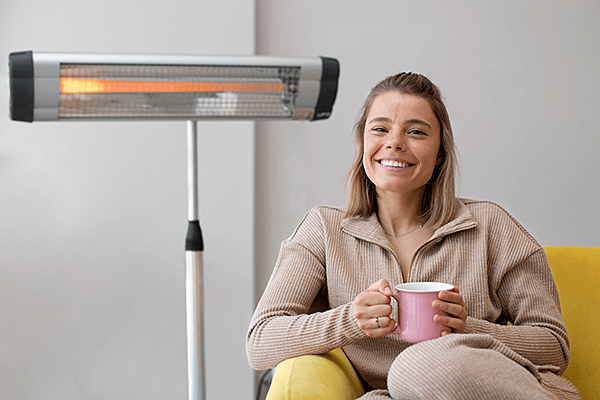As the chill of winter blankets our homes, the quest for warmth often leads us to various heating solutions. Among these, wall-mounted space heaters have emerged as a popular choice. Their compact design and effective heating capabilities make them appealing, but this begs the question: Are they safe to use?
This comprehensive guide explores wall-mounted space heaters, assessing their safety, functionality, and the potential concerns that homeowners should consider. We will delve into different types of space heaters, safety features, and best practices to provide a balanced view on the use of these heating appliances.
Understanding Wall-Mounted Space Heaters
Wall-mounted space heaters are designed to provide warmth in specific areas of a home. Unlike traditional central heating systems, they offer localized heat, which can be particularly beneficial in rooms that require additional warmth. There are two primary categories of wall-mounted heaters: electric and hydronic.
Electric Wall-Mounted Space Heaters
Electric wall-mounted heaters are commonly favored for their ease of installation and immediate warmth. Using electrical resistance, they convert electricity into heat, making them straightforward in operation. Models can range from simple radiative heaters to more advanced units with programmable thermostats and remote controls, enabling users to customize their heating experience.
Hydronic Wall-Mounted Space Heaters
Hydronic heaters operate on a different principle, circulating hot water through pipes or panels mounted on the wall. Though often more expensive to install than electric models, these heaters provide consistent warmth and can be energy efficient, especially in homes where hot water is readily available. The slow release of heat can offer a cozy environment free from the abrupt temperature changes associated with electric heaters.
Safety Considerations
While wall-mounted space heaters offer significant advantages in terms of convenience and efficiency, safety remains a paramount concern. Several factors contribute to the overall safety of these devices:
Material & Placement
The materials used in wall-mounted heaters can significantly influence safety. Look for units made from fire-resistant materials. Proper placement is also essential; heaters should be positioned away from flammable objects like curtains, furniture, or paper. Ensuring that there is adequate clearance around the heater promotes better air circulation and minimizes the risk of fire.
Overheating Protection
Many modern wall-mounted heaters are fitted with overheating protection features, which automatically shut the unit off if it begins to overheat. This is a crucial safety mechanism that can prevent not only fire hazards but also damage to the unit itself. Always verify that the heater you choose includes this feature.
Electrical Safety
For electric wall-mounted heaters, electrical safety is always a concern. Ensure that your home’s electrical system can accommodate the heater’s power needs. A qualified electrician should conduct any necessary upgrades to your electrical panel. Consider using a dedicated circuit for your wall-mounted heater to prevent overloading, which can lead to potential electrical hazards.
Child and Pet Safety
With families often including children and pets, safety becomes even more critical. Educate your family about the heater’s purpose and operation. Certain wall-mounted heaters can become hot to the touch, which is why it is vital to mount them high enough to minimize contact. Choosing models designed with safety in mind—like those with a cool-touch exterior—can further reduce risks.
Best Practices for Safe Use
Safety extends beyond the heater itself; it also involves our habits and routines. Implementing best practices can help mitigate risks associated with wall-mounted space heaters. Here are a few recommendations:
- Regular Maintenance: Like all household appliances, wall-mounted heaters require regular upkeep. Dust and debris can accumulate, posing fire hazards. Clean the unit periodically according to the manufacturer’s instructions.
- Situational Awareness: Always monitor the heater while it’s in use, especially in households with children or pets. Even if a heater features an automatic shut-off, human supervision is the best form of safety.
- Use Timers: Some models come equipped with timers or programmable settings. Utilize these features to limit heating times and reduce energy costs.
Environmental Considerations
With a growing consciousness toward sustainability, the environmental impact of heating choices is worth noting. Electric wall-mounted heaters can produce higher carbon footprints if powered by non-renewable energy sources. Conversely, hydronic heaters can be more sustainable when connected to eco-friendly heating systems such as solar water heaters. Selecting energy-efficient models rated by Energy Star can help reduce greenhouse gas emissions.
Conclusion: Weighing Your Options
When contemplating the use of wall-mounted space heaters, it is vital to weigh the benefits against potential safety concerns. These heating appliances can offer incredible comfort during colder months, but understanding their operation and implementing safety precautions is essential. By staying informed, practicing safe usage, and selecting models with advanced safety features, one can enjoy the warmth of wall-mounted space heaters without undue worry. Ultimately, a safe and warm home is achievable with the right knowledge and care.
